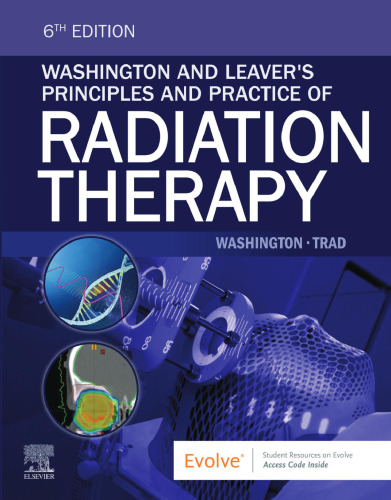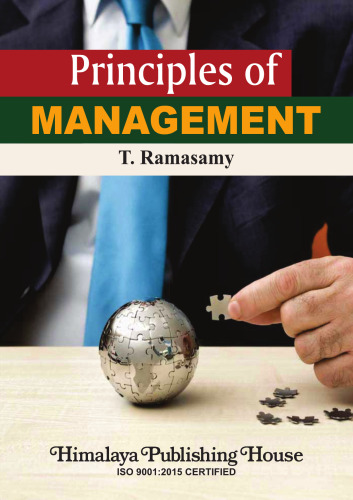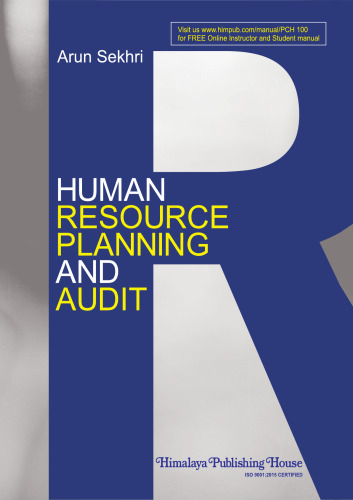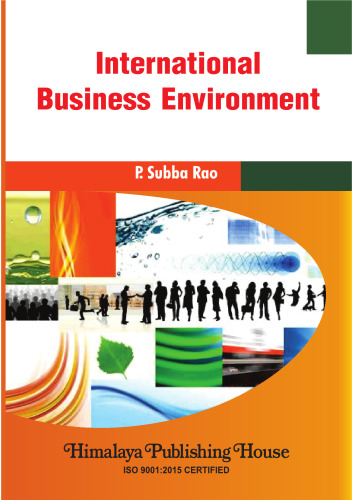INTRODUCTION The development of higher-order thinking skills is a primary goal of higher education (Behar-Horenstein & Niu, 2011). Through higher-order thinking, students are better able to make judgements about com- peting perspectives and generate their own solutions to complex issues. However, many faculty struggle with structuring their courses in ways that help students develop such critical thinking skills. Instead, faculty structure their courses to transmit knowledge, and help students learn “what to think rather than how to think” (Daud & Husin, 2004, p. 478 as quoted in Behar-Horenstein & Niu, 2011, p. 215). There are various approaches to addressing the development of higher-order thinking skills in higher educa- tion. Gamification of learning is one such approach that has gained increased attention in recent years. Games can serve as powerful learning tools (Kapp, 2012; Nordby, Øygardslia, Sverdrup & Sverdrup, 2016). Today’s students almost expect something like gamification, due to their comfort with technol- ogy, and their expectations to be engaged beyond traditional lecture approaches (Lister, 2015). Learning comes about through game play because games designed around educational outcomes require players (e.g. students) to learn in order to progress in the game (Ke, Xie & Xie, 2016).
چکیده فارسی
مقدمه توسعه مهارتهای تفکر مرتبه بالاتر هدف اصلی آموزش عالی است (بهار-هورنشتاین و نیو، 2011). از طریق تفکر مرتبه بالاتر، دانش آموزان بهتر می توانند در مورد دیدگاه های رقابتی قضاوت کنند و راه حل های خود را برای مسائل پیچیده ایجاد کنند. با این حال، بسیاری از اساتید با ساختار دورههای خود به شیوهای مبارزه میکنند که به دانشآموزان در توسعه چنین مهارتهای تفکر انتقادی کمک کند. درعوض، اساتید دوره های خود را طوری ساختار می دهند که دانش را انتقال دهند و به دانش آموزان کمک می کنند تا یاد بگیرند "به جای اینکه چگونه فکر کنند به چه چیزی فکر کنند" (Daud & Husin, 2004, p. 478, به نقل از Behar-Horenstein & Niu, 2011, p. 215). رویکردهای مختلفی برای پرداختن به توسعه مهارت های تفکر مرتبه بالاتر در آموزش عالی وجود دارد. گیمیفیکیشن یادگیری یکی از این رویکردهاست که در سال های اخیر توجه زیادی را به خود جلب کرده است. بازیها میتوانند به عنوان ابزار یادگیری قدرتمند عمل کنند (Kapp، 2012؛ Nordby، Øygardslia، Sverdrup & Sverdrup، 2016). دانشآموزان امروزی به دلیل راحتی آنها با فناوری و انتظارات آنها فراتر از رویکردهای سخنرانی سنتی، تقریباً انتظار چیزی مانند گیمیفیکیشن را دارند (لیستر، 2015). یادگیری از طریق بازی به دست می آید زیرا بازی هایی که حول محور نتایج آموزشی طراحی شده اند به بازیکنان (به عنوان مثال دانش آموزان) نیاز دارند تا در بازی پیشرفت کنند (Ke, Xie & Xie, 2016).
ادامه ...
بستن ...
Detailed Table of Contents
Foreword ............................................................................................................................................xvii
Preface ................................................................................................................................................. xix
Acknowledgment ..............................................................................................................................xxiii
Chapter 1
Using Gamification to Engage Higher-Order Thinking Skills ................................................................ 1
Brian Bourke, Murray State University, USA
Critical thinking and other higher-order thinking skills are key objectives of higher education. Through
the development of higher-order thinking skills, students are able to discern information from multiple,
often competing sources, make sound judgements, draw conclusions, and enact creative solutions to
complex problems. However, faculty can struggle with how to help students develop higher-order
thinking skills, relying instead on transmission of knowledge, focusing on what to learn instead of how
to learn. In this chapter, the author provides insights into the connections between using gamification
as a pedagogical approach, and the development of higher-order thinking skills. The chapter addresses
perspectives on higher-ordering thinking, approaches to gamification in college courses, and concludes
with recommendations for faculty in approaching gamification.
Chapter 2
Teaching Critical Thinking: Content Integration, Domain-Specificity, and Equity ............................. 22
Bruce Torff, Hofstra University, USA
This chapter outlines how to teach critical-thinking skills is a central issue at home, in school, on the
job, and in life. Outcomes of critical-thinking pedagogies are optimized under three conditions: 1) when
thinking skills are integrated with disciplinary content, not sequentially following a content presentation;
2) when thinking skills are taught as utilized in specific domains/disciplines, not decontextualized or
treated as domain-general; and 3) when thinking skills are emphasized for all learners, not just advantaged
ones with greater prior knowledge or academic ability. Accordingly, teaching critical thinking might
well be structured to be integrative, domain-specific, and equitable.
Chapter 3
Developing Diversity Awareness and Multicultural Competence Across Liberal Arts Campuses ...... 37
Farah L. Vallera, Lehigh University, USA
LaKeisha Thorpe, Moravian College, USA
Lizabeth Kleintop, Moravian College, USA
The rapidly changing world requires students to be prepared to address change and diversity with empathy,
tolerance, and competence. To help prepare them, the authors collaboratively developed and implemented
a set of blended, cross-campus multicultural competence modules in graduate and undergraduate courses.
This chapter discusses the use of blended learning techniques, digital tools, and learning management
technologies, as well as instructional design and collaborative approaches to teaching, learning, and course
development. The modules were created to be disseminated for use in multiple courses, disciplines, and
collegiate levels across college campuses in an effort to better prepare students for the rapidly changing
social landscape of interpersonal relationships and technological developments. Recommendations for
similar development and implementations are provided.
Chapter 4
Entrepreneurial Skills for the 21st Century Workplace: The SME Sector ........................................... 56
Mauvalyn M. Bowen, Bethel University, USA
Karen R. Johnson, University of North Texas, USA
The foundation of graduates’ employability is based on skills and by extension, workers. Due to the high
levels of unemployment among young people, entrepreneurial skills for graduates and the workforce
becomes an imperative to scholars and policy makers trying to tackle unemployment issues by providing
students with skills, and competences that fulfill the needs of a very competitive labor market (Pereira,
Vilas-Boas & Rebelo, 2016). To encourage collaboration on educational innovation, to promote
entrepreneurship education, and to improve university technology and knowledge transfer to industry
and society, several initiatives were developed. This chapter discusses some of those initiatives and
contributes to the skills discourse by proposing strategies to empower, structure, and improve innovative
curriculum, workplace, and life. Some skills shortages identified for the 21st century workplace are:
learning and innovation skills, career and life skills; adaptability, self-reliance and social skills, team
building, technology, leadership and responsibility skills.
Chapter 5
Using Technology to Foster Creative and Critical Thinking in the Classroom .................................... 70
Lisa A. Bloom, Western Carolina University, USA
Kristy Doss, Western Carolina University, USA
Enhancing and nurturing creative and critical thinking skills are important goals for 21st century
learning yet high stakes assessment and standardized curriculum leave little room for realizing these
goals in 21st century classrooms. Used appropriately, technology help teachers create personalized
learning environments and attend to the type of motivation and engagement that nurtures creative and
critical thinking skills. This chapter explores conceptions of creativity, draws on theories of motivation
to identify optimal conditions for nurturing creativity and suggests technology supported strategies for
creating those conditions.
Chapter 6
The Role of Teacher Education in Developing Employability Skills in Higher Education .................. 85
Joyce Bukirwa Sessanga, Nkumba University, Uganda
Badru Musisi, Makerere University, Uganda
This chapter explores the need to equip student teachers with the skills that will enable them to train and
develop their learners for employability. However, given the broad understanding of employability, it is
important to recognize that the quality of a university graduate is not just a reflection of the quality of the
curriculum and its supporting academic environment. It reflects the demands of the industry as well as
the competence of the regulating body (i.e. related government institutions) in shaping the characteristics
of higher education graduates. It might be overly simplistic to say that universities are encouraged, if not
pressured, to produce employable graduates. The higher education sector therefore needs to recognize
and understand the context of employability for their graduates to ensure that their students can live up
to the expectations from governments and employers.
Chapter 7
Teacher-Centred Delivery Approach in Uganda’s Secondary School Education and Empowering
Learners With Higher Order Skills ....................................................................................................... 99
Dorothy Businge Kabugo Kakongoro, Nkumba University, Uganda
This chapter analyses the extent to which the teacher-centred delivery approach has influenced the quality
of learning in private secondary school education in Uganda. Theories applied are: The Stimulus-Response
(S-R) Learning theory, the Social Learning theory and the Transmission model. A Self-administered
questionnaire, Focus Group discussion and interview guides were used to collect data. Discussion of
the chapter centered on how the teacher’s roles inside the classroom result into attainment of problem
solving skills, interpersonal skills and preparing the learner for occupation. Findings showed that, to
equip learners with higher order skills, teachers demonstrated all the five roles. However, effective use
of this approach was encumbered by a number of limitations that recommendations are provided. Key
among these is incorporating a number of activities to inter-marry the philosophies of the teacher-centred
and the student-centred approaches in secondary school education.
Chapter 8
Education for Sustainable Development (ESD) in Higher Education ................................................ 117
Margaret Stella Suubi Ujeyo, Busitema University, Uganda
Criticisms abound regarding the quality and relevance of higher education. Addressing these criticisms
requires innovative approaches including Education for Sustainable Development (ESD). This chapter
examines the contribution of ESD to the quality and relevance of higher education. The chapter explains
the concepts of quality, relevance, sustainable development, and education for sustainable development
in higher education. Applying the concepts of systems theory and transformative learning, the chapter
explores the contribution of ESD to improvement of higher education through strategies that empower
learners with higher order skills. Many of the ESD learning outcomes and competences could translate
into success in the lives of graduates in the workplace. The challenges to the adoption of ESD in higher
education are also discussed.
Chapter 9
Essential Skills for the 21st Century Workforce ................................................................................. 134
Maureen Short, North Carolina Central University, USA
Yolanda Keller-Bell, North Carolina Central University, USA
This chapter contends that increasing technological innovation has disrupted and continues to disrupt
the labor markets making some jobs obsolete and workers redundant. The key to success in the twenty-
first century and future labor markets is to combine hard and soft skills into a comprehensive package
tailored to specific needs including the ability to think clearly about complex problems, apply creative and
innovation solutions to solve problems, and apply new knowledge and skills in new settings. This chapter
will provide a discussion of some of the reasons underlying the demand for higher workforce skills and
a descriptive overview of curricula and pedagogy that promote students’ acquisition and application of
critical thinking skills as well as other skills considered essential for 21st century workforce.
Chapter 10
Enhancing Work-Life Balance and Research Engagement Among Students in Higher Education
Institutions........................................................................................................................................... 148
Dennis Zami Atibuni, Busitema University, Uganda
David Kani Olema, Busitema University, Uganda
Joseph Ssenyonga, Mbarara University of Science and Technology, Uganda
Grace Milly Kibanja, Makerere University, Uganda
Engagement in higher degree pursuit is a function of psychological constructs including core self-
evaluations, academic motivation, work-life balance, and research skills proficiency. Core self-evaluations
and academic motivation are precursors for student engagement in terms of effort expenditure, collaboration,
institutional support-seeking, and relating with faculty. However, given that higher degree students are
mainly working class, their work-life balance as well as research skills proficiency act as intervening
variables to influence the relationship between the dispositional states and actual engagement of the
students. Basing on empirical findings from various studies, the authors explicate in this critical review
the (combined) mediation and moderation effects of the intervening variables on the links between
academic motivation and core-self evaluations as predictors and the students’ research engagement as a
criterion variable. A conceptual model is theorized for the links between these concepts as a framework
for research engagement and hence research completion among students.
Chapter 11
Interactive Digital Instruction: Pedagogy of the 21st Century Classroom ......................................... 166
Shawn L. Robertson, St. Joseph’s College New York, USA
This chapter explores the concepts of pedagogy and its development in the typical higher education
classroom as a lecture-focused activity, to how improvements could be made to the process of teaching
students from a critical perspective utilizing constructivist principles. The author details the process
of moving from a teacher-focused closed system of learning to a student-centered digital pedagogy
that engages the student in uniquely rigorous ways utilizing varied technologies. The author describes
the development of the process from its inception to the most advanced stages and offers critiques and
insights for others to follow utilizing TPACK.
Chapter 12
Promoting Competence-Based Learning and Assessment Through Innovative Use of Electronic
Portfolios ............................................................................................................................................. 181
Joyce W. Gikandi, Mount Kenya University, Kenya
This chapter focuses on how innovative use of electronic portfolios (e-portfolios) can contribute towards
meeting the needs of 21st century learners by promoting competence-based learning and assessment.
The author explores various strategies and functionalities of e-portfolio application in higher education.
Further, fundamental issues that relate to successful implementation of student academic e-portfolios are
examined. Specifically, the relevance of congruent theoretical perspectives and teacher’s involvement in
the process of e-portfolio development are articulated among other key issues. Based on the emergent
perspectives elucidated through this chapter, best practices to inform innovative and effective uses of
e-portfolios are identified. The chapter illuminates how the effective use of e-portfolio can promote
meaningful learning experiences and development of core competences including interactive collaboration,
creativity, critical thinking, digital literacy, problem solving and self-efficacy.
Chapter 13
Cultivating Critical Thinking Amongst University Graduate Students .............................................. 209
David Onen, Makerere University, Uganda
The importance of critical thinking in 21st century knowledge economy is no longer disputable. Yet,
its cultivation amongst learners remains a challenge - even to the most accomplished teachers. This
chapter examines the perceptions of critical thinking held by faculty members of a university’s college
of education in Uganda. The study findings reveal that faculty members have different perceptions of
what critical thinking is, its importance, and how it is cultivated amongst graduate students. Additionally,
the faculty reported several challenges while cultivating critical thinking among students. It was thus
concluded that the differences in faculty members’ perceptions of critical thinking were responsible
for its inadequate cultivation amongst students, other factors notwithstanding. Therefore, the study
recommends for the formal inclusion of critical thinking in the curricula of graduate programs in order
to strengthen its cultivation among students.
Chapter 14
Technology-Enhanced Classroom to Enhance Critical Thinking Skills: Teachers’ Perspectives ...... 225
Alice Omariba, Kenyatta University, Kenya
This chapter describes how the impact of digital technology can now be felt in all spheres of life leading
to global competition especially in education. The vision for technology-enhanced classrooms is one in
which student groups work on long-term, multidisciplinary projects involving challenging content that
is interesting and important to them with the support of technological tools for collecting, analyzing,
displaying and communicating information. In the face of severe social and economic challenges, many
developing countries are struggling to overcome barriers to the integration of digital tools in education
to help students develop high-order skills and global competences for life and work. This chapter is
intended to further discussions on incorporating technologies into instruction in order to bridge the gap
between critical thinking skills and digital tools, and helping learners to become globally competent at
the digital workplace.
Chapter 15
Towards a Framework for Lifelong E-Learning and Employability ................................................... 245
Juan-Francisco Martínez-Cerdá, Universitat Oberta de Catalunya (UOC), Spain
Joan Torrent-Sellens, Universitat Oberta de Catalunya (UOC), Spain
This chapter presents and introduces several key concepts related to lifelong e-learning as a way for
employability from the point of view of the socio-technical approach. Current employability needs
and continuous training via new information and communication technologies bring an opportunity
for a fresh proposal in this research area. Starting with the human capital approach, and several issues
related to a socio-technical lifelong e-learning, we introduce the need of a new conceptual framework
for improving the employability of workers and global citizens, which is based on relationships between
people and technologies.
Chapter 16
Core Competencies and Innovation for Library and Information Science Professional in 21st
Century Digital-Based Environments ................................................................................................. 264
Robert Akinade Awoyemi, Adeyemi Federal College of Education, Nigeria
Academic libraries and information technology centres are under serious threat due to the increasing
pressure to achieve higher level of performance in a competitive global environment. Most of these
challenges are as result of information communication technology (ICT) and digital revolution. This
chapter discusses the impact of digital revolution on academic libraries and the need to acquire core
competencies and new skills to effectively the 21st century academic libraries and information technology
centres. Further, the author examines the sets of skills required by Library and Information Science (LIS)
professionals to survive in the digital-based environments.
Chapter 17
Strengthening Internationalisation of the Curriculum in Higher Education: A Case Study............... 281
Lawrence Meda, Cape Peninsula University of Technology, South Africa
Internationalisation has become a buzzword in institutions of higher learning today. Universities are
challenged to find ways of making their curriculum have international dimensions. This chapter presents
a case study on how to enhance internationalisation in an engineering programme piloted at a university
of technology in South Africa. Daniel Stufflebeam’s Context, Input, Process and Product evaluations
model was used as a theoretical framework. Data was collected using semi-structured interviews with
the Dean of the faculty, Head of department and a programme coordinator. The findings suggest that
a mobile profession like engineering requires purposeful integration of internationalisation in order to
increase graduates’ chances of being active participants in a global economy.
Chapter 18
Teaching Executive Functions: Modeling Independence From Cradles to College for Success ........ 295
Angela Owens, Education Service Center – El Paso, USA & University of Texas at El Paso,
USA
Bernice Garcia, Education Service Center – El Paso, USA
Neuroscientists have identified Executive Functions (EF) as the skills and processes persons use to engage
in purposeful, goal-directed, and future-oriented behaviors. This chapter will consider the correlation
between new research about executive functions and implications for educators in nursery, primary,
secondary and post-secondary school settings. The first part of the chapter will provide a synthesis of
what EF are and how research about the brain is useful for educators. The second part of the chapter
will provide recommendations for educators provided in Boosting Executive Skills in the Classroom:
A Practical Guide for Educators as well as other resources available for educators intending to improve
EF skills in developing children, preparing them for greater success in college and in the workforce.
Chapter 19
Incorporating Representation-Based Instruction Into Mathematics Teaching: Engaging Middle
Schoolers With Multiple Representations of Adding Fractions ......................................................... 311
Fadime Ulusoy, Kastamonu University, Turkey
Lutfi Incikabi, Kastamonu University, Turkey
Developing students’ abilities in using and selecting appropriate representations and making transformations
between representations is an important issue in mathematics education. Among the mathematical
concepts, fractions have always reported as a challenging issue for students in the middle schools for
a long time. In this sense, researchers have suggested the use of different representations in learning
and teaching of fractions in order to enhance students’ conceptual understandings of fractions. Based
on this suggestion, we provide some activities for engaging middle school students with multiple
representations of fractions by focusing on addition operation. These activities are focused on the need
to identify appropriate instructional strategies to enhance students’ communication and critical thinking,
thus improving their academic performance in mathematics.
Chapter 20
Using Learner Centered Pedagogy and Social Justice Pedagogy in Post-Secondary Technical and
Professional Communication Writing Courses ................................................................................... 337
Kimberly C. Harper, North Carolina A&T State University, USA
This chapter discusses the author’s approach to implementing social justice and learner-centered
pedagogies in a course titled Technical Communication in the Age of #BlackLivesMatter. The author
uses the Black Lives Matter movement as a springboard for teaching technical communication students
about the responsibilities of workplace writers. Technical and Professional Communication (TPC) make
use of a skills-based pedagogy and, at times, omits the importance of providing students with cultural
competency skills. However, there is a shift in the field of TPC as some scholars are advocating for the
inclusion of topics such as race, culture, gender, and class in pedagogical discussions. Discussed in this
chapter are the theories behind the author’s pedagogical choices when creating the described course, the
student assignments, and the challenges encountered while teaching the course.
Compilation of References ............................................................................................................... 351
About the Contributors .................................................................................................................... 408
Index ................................................................................................................................................... 416
ادامه ...
بستن ...

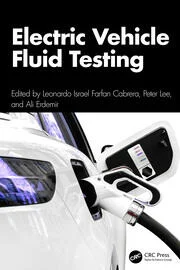


![Our mission to the court of Marocco [Morocco] in 1880, under Sir John Drummond Hay - pdf Our mission to the court of Marocco [Morocco] in 1880, under Sir John Drummond Hay - pdf](https://dl.libsan.ir/images/1/12/112108724_694b9e9769312.jpg)
